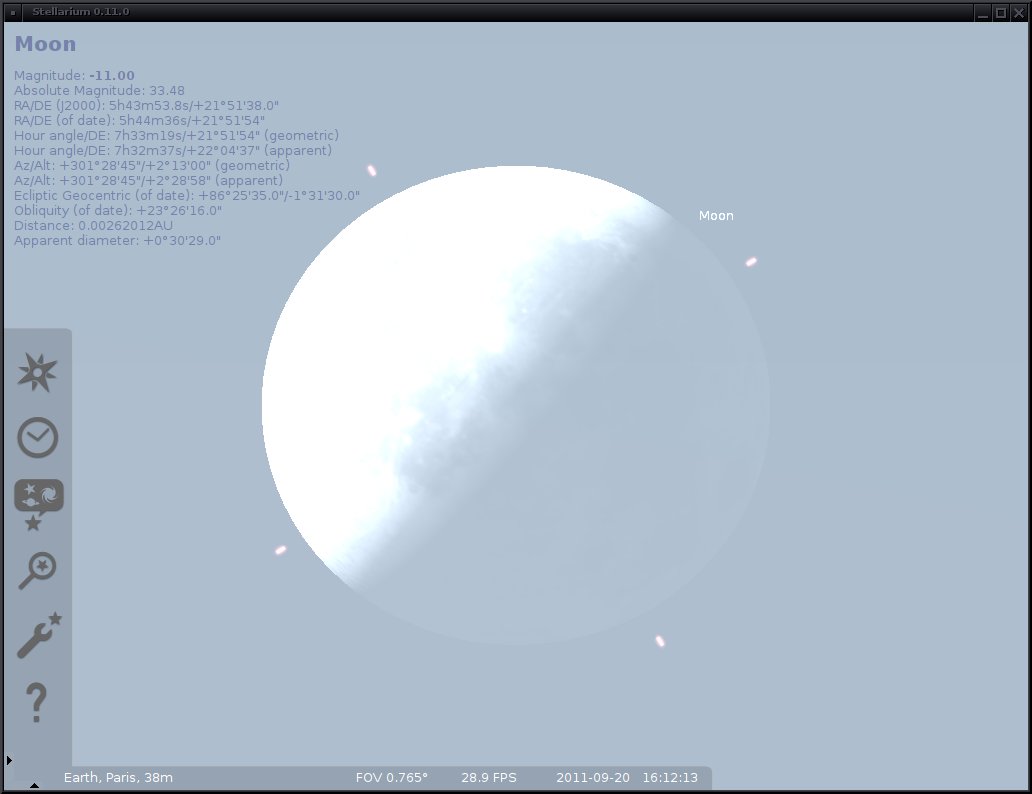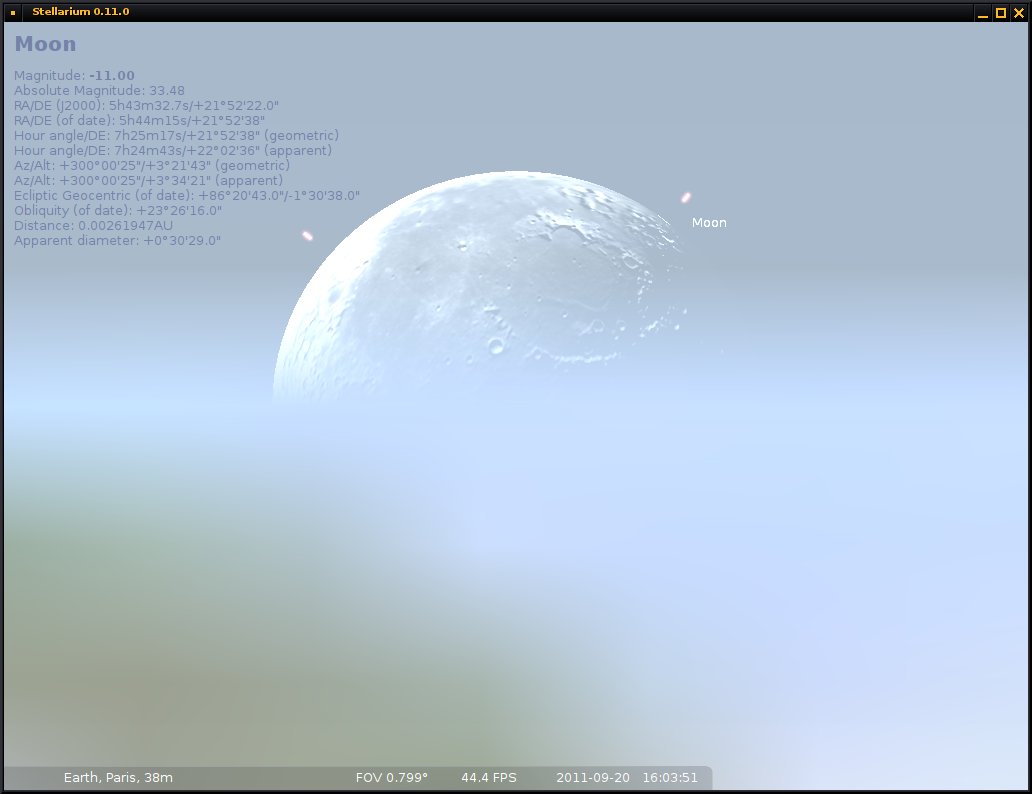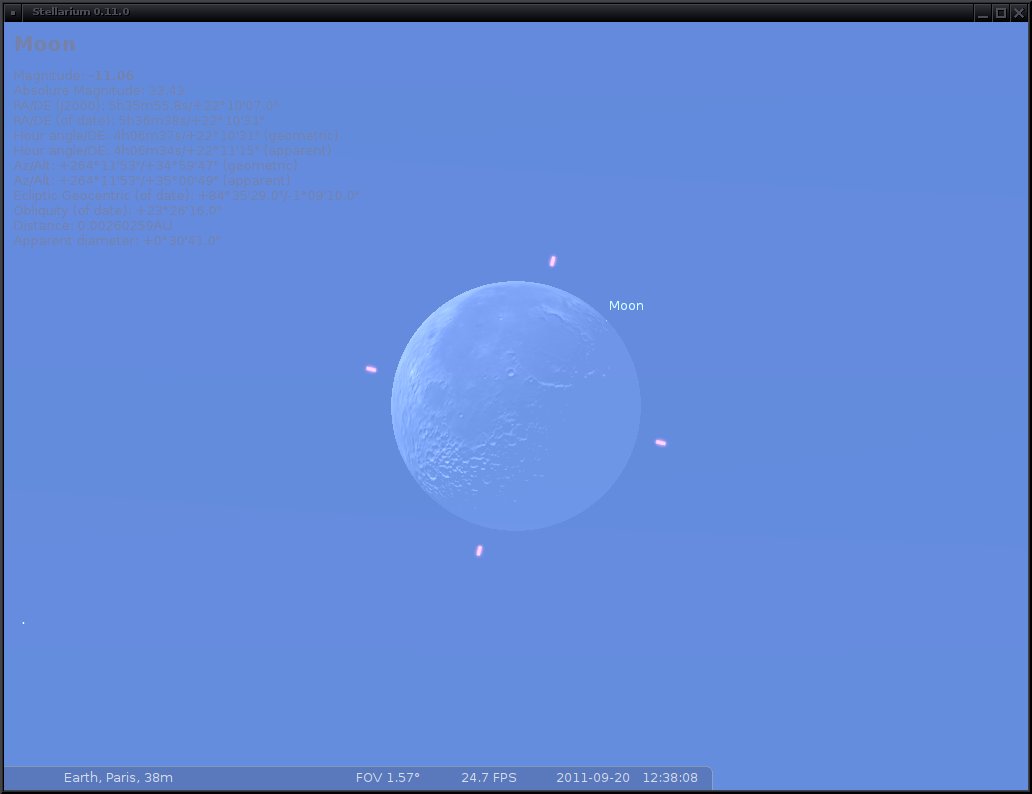While playing with the Venus clouds parameters on Stellarium, ahenotri produced this amazing Star Wars like result. xD I don’t know if it looks like Venus at all but it’s certainly Art! 🙂
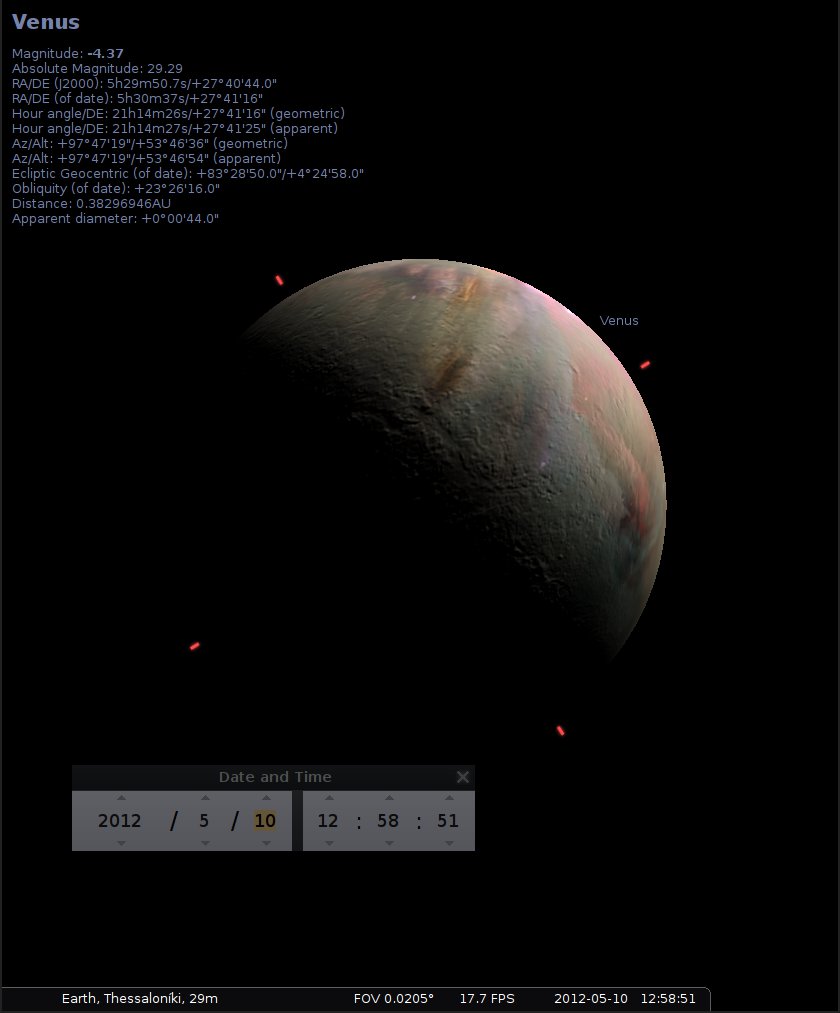
As part of the ESA Summer of Code in Space 2011 I improved Stellarium planet rendering (here is a previous post on the project).
More specifically, the following features were added:
1) Procedural perlin noise (fBm) clouds.
2) Bump mapping with normal maps.
The improved rendering code is implemented with GLSL shaders, and requires shader model 3.0 capable graphics hardware.
The following video that shows the effects… (It looks slow because of bad recording, the effects don’t have any impact on Stellarium performance). But you can see the bump mapping and the clouds! 🙂
Many thanks to the Stellarium development team and the ESA SOCIS organization team for giving me the opportunity to participate in the project! 🙂
Here are some screenshots of the new planet rendering in the Stellarium software, implemented as part of the European Space Agency Summer of Code in Space. I implemented a bump mapping algorithm (using normal maps) in GLSL shaders and I integrated it into the Stellarium application (C++). The planets are ellipsoids. There are still many different things to be done for further improving the project, these are just some samples.
(Many thanks to my mentor Fabien Chéreau and the Stellarium development team for giving me the opportunity to participate in the ESA SOCIS, as well as to the organizers of the summer of code!!)*
Screenshots of the moon at night:

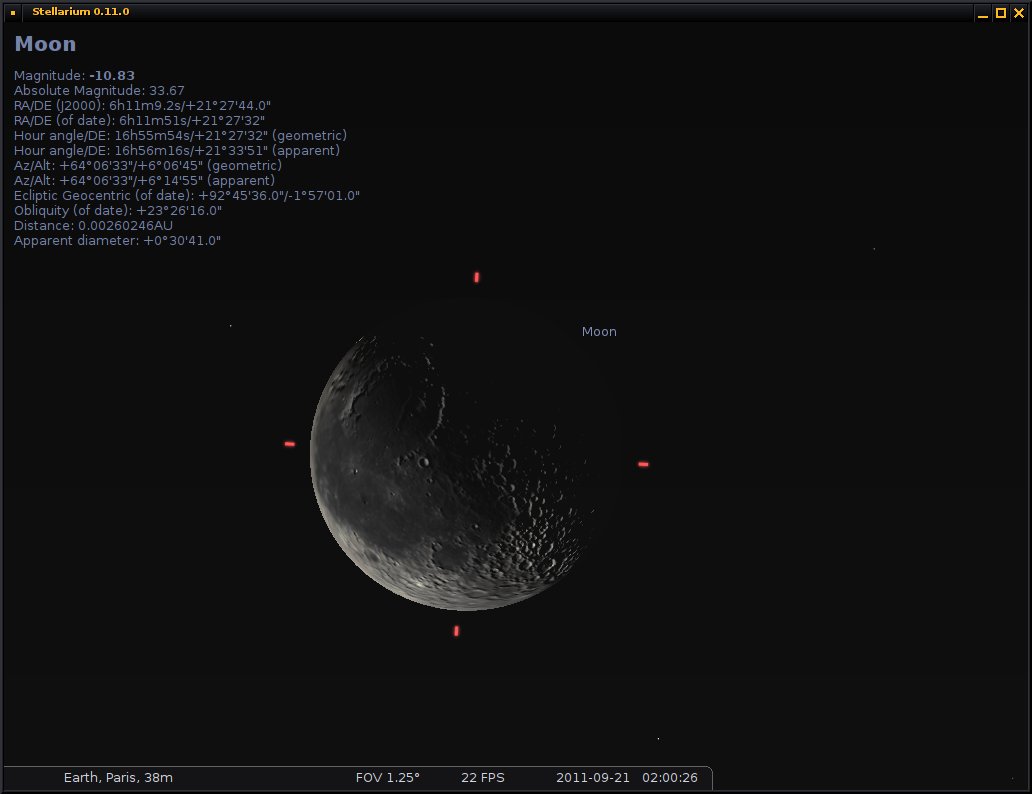
Screenshots of the moon when there’s still daylight:
